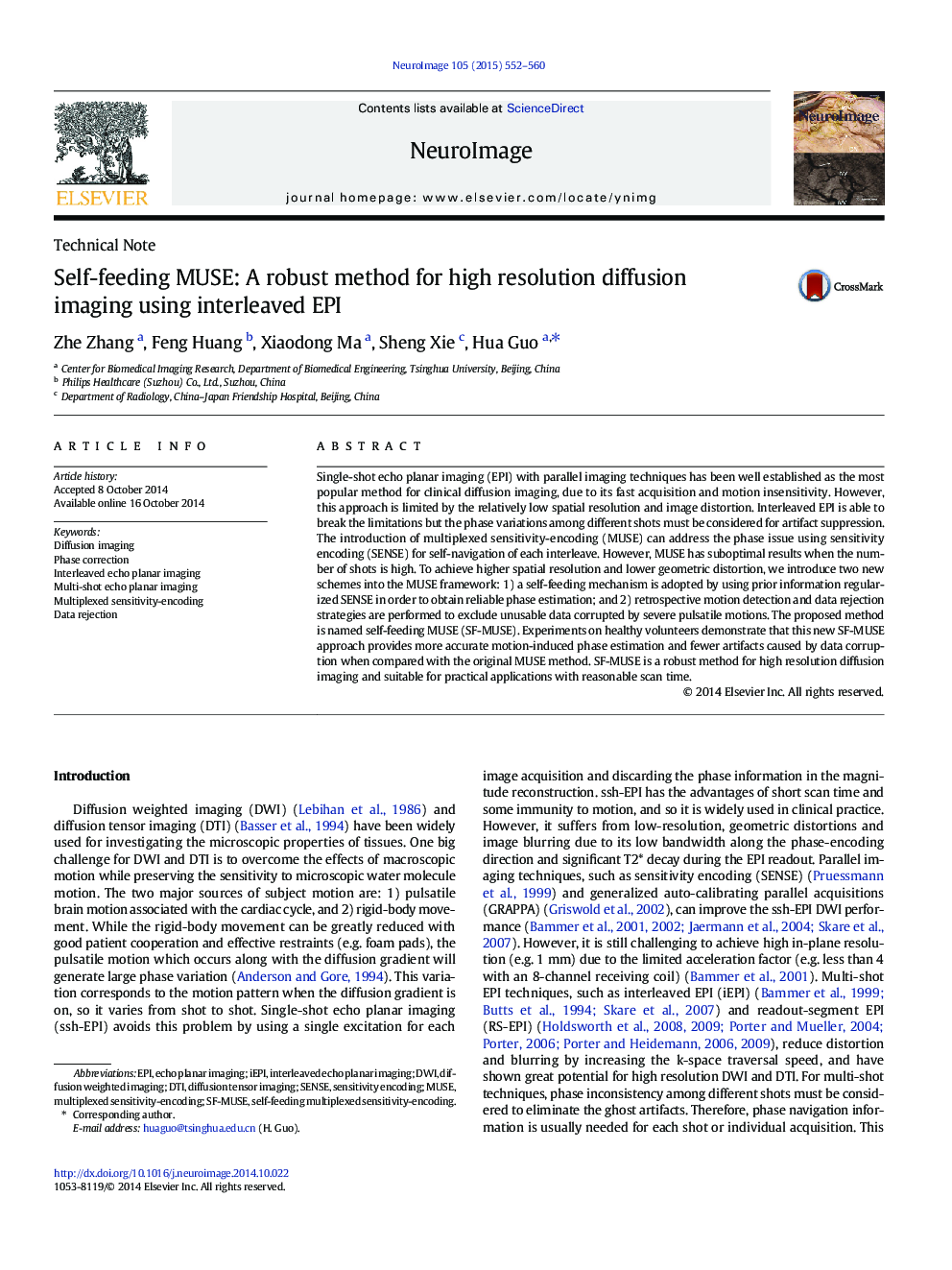| Article ID | Journal | Published Year | Pages | File Type |
|---|---|---|---|---|
| 6026733 | NeuroImage | 2015 | 9 Pages |
â¢More accurate phase variation estimationâ¢Corrupt data detection and rejection for motion artifact suppressionâ¢Navigator-free and thus high acquisition efficiencyâ¢Better image quality with reduced artifacts than the conventional MUSE approach
Single-shot echo planar imaging (EPI) with parallel imaging techniques has been well established as the most popular method for clinical diffusion imaging, due to its fast acquisition and motion insensitivity. However, this approach is limited by the relatively low spatial resolution and image distortion. Interleaved EPI is able to break the limitations but the phase variations among different shots must be considered for artifact suppression. The introduction of multiplexed sensitivity-encoding (MUSE) can address the phase issue using sensitivity encoding (SENSE) for self-navigation of each interleave. However, MUSE has suboptimal results when the number of shots is high. To achieve higher spatial resolution and lower geometric distortion, we introduce two new schemes into the MUSE framework: 1) a self-feeding mechanism is adopted by using prior information regularized SENSE in order to obtain reliable phase estimation; and 2) retrospective motion detection and data rejection strategies are performed to exclude unusable data corrupted by severe pulsatile motions. The proposed method is named self-feeding MUSE (SF-MUSE). Experiments on healthy volunteers demonstrate that this new SF-MUSE approach provides more accurate motion-induced phase estimation and fewer artifacts caused by data corruption when compared with the original MUSE method. SF-MUSE is a robust method for high resolution diffusion imaging and suitable for practical applications with reasonable scan time.
